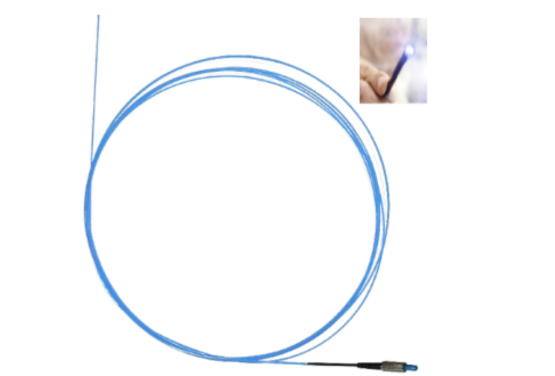When considering which medical laser fibers are compatible with laser systems, multiple factors come into play, including diameter, application fields such as surgery, endoscope, beauty, ENT, dental, laser system type, wavelength, output voltage, silica fiber properties, and Numerical Aperture (NA) value.
Fiber Diameters for Different Applications
Surgery: High – power fibers are usually needed for tissue cutting and coagulation. The fiber ends require special designs to transmit high – energy lasers. Common diameter ranges are 300μm – 1000μm (0.3mm – 1mm), suitable for surgeries that require high – energy density, such as tissue cutting and ablation; 200μm – 400μm (0.2mm – 0.4mm) are suitable for delicate cutting and fine surgical operations. For example, some surgical procedures may choose fibers with stronger high – power transmission capabilities but slightly less flexibility. At the same time, fibre ends need to be specially designed (e.g. bare fibre, holmium fibre tips) in order to transmit high energy lasers.
Endoscope Surgery: Fibers with high flexibility are required to adapt to the paths and operations of endoscopes. Common diameter ranges are 200μm – 600μm (0.2mm – 0.6mm), and 365μm is a common fiber size in endoscope surgeries. For instance, fibers with core diameters of 200μm, 365μm, and 550μm respectively, are often used in urology and different endoscope surgeries.
Beauty Treatments: When used in laser beauty, the fibers need to be suitable for transmitting specific wavelengths to ensure treatment effects. 400μm is the standard fiber diameter for many laser beauty devices.
Dental Applications: A diameter range of 200μm – 400μm (0.2mm – 0.4mm) is more appropriate. The fibers need to be able to accurately transmit lasers to avoid damage to healthy tissues.
Fiber Characteristics
The core diameter determines the power density and beam quality of the fibre. Typically, fibers with larger core diameters can transmit higher power lasers, but the beam quality may be poorer.
Numerical Aperture (NA): NA affects the beam divergence angle of the fibre. Fibres with high NA capture light better, but may increase the divergence angle.
Coating and cladding: The coating and cladding material of an optical fiber affects the durability and biocompatibility of the fiber. Medical fibers are often made of biocompatible materials such as polyetherimide (PEI) and polytetrafluoroethylene (PTFE).
Ensure that the fiber is compatible with connectors for lasers, surgical instruments, e.g. SMA, FC, LC, D80 etc.
If you can provide more specific information such as the model of the laser system, application field, or other special requirements, we can provide more accurate fiber recommendations.
